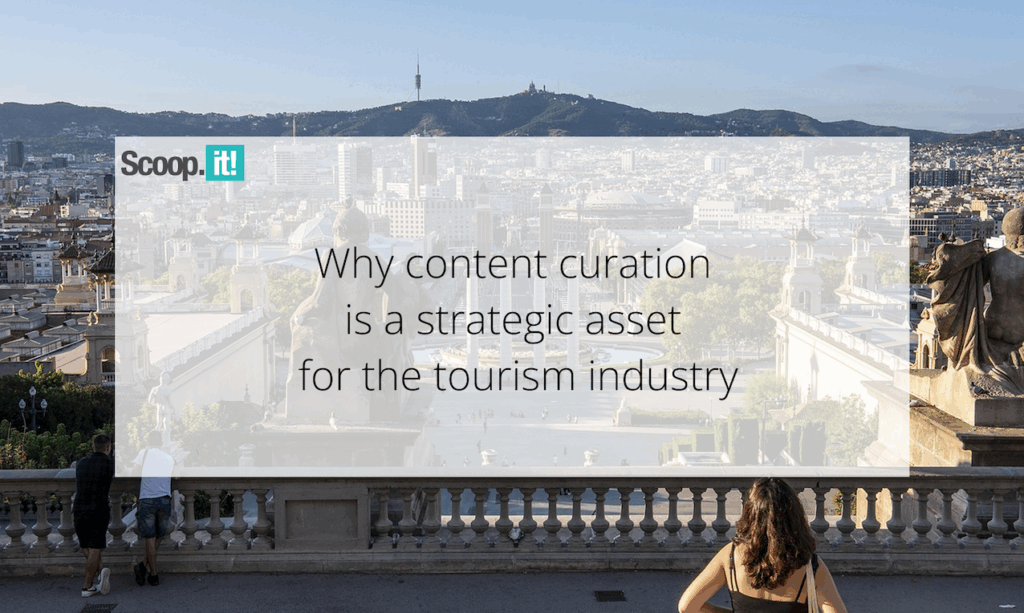
In today’s tourism landscape, travelers are bombarded with information from every direction—travel blogs, social media, booking platforms, review sites, and more. While this abundance creates opportunities, it also leads to information overload, decision fatigue, and confusion. For tourism professionals, the challenge is no longer just to be present online, but to stand out by offering targeted, high-quality, and trustworthy content.
This is where content curation becomes a game changer. More than simple content aggregation, content curation is the practice of selecting, organizing, contextualizing, and sharing existing content to add value, guide audiences, and reinforce brand identity.
Here are four key ways content curation can benefit tourism professionals—from local tourism offices to independent travel agencies and hospitality businesses.
1. Enhance the Traveler Experience Across the Entire Journey
The issue it addresses:
Travelers often plan their trips independently, navigating dozens of sources to gather information. This process can quickly become overwhelming, especially when the information is scattered, inconsistent, or poorly presented.
How curation helps:
Content curation provides a clear, structured, and supportive information journey. It anticipates the traveler’s needs at every stage—dreaming, planning, booking, experiencing, and sharing. Curated content ensures that users are not just inspired, but also well-informed and confident in their choices.
Example:
A regional tourism board creates curated travel “bundles” based on visitor profiles: family getaways, nature lovers, cultural explorers. Each bundle includes interactive maps, blog articles, recommended itineraries, user reviews, and booking links. This curated approach improves user satisfaction and highlights local offerings in a meaningful way.
2. Increase Visibility and Strengthen Brand Positioning
The issue it addresses:
Smaller tourism operators often struggle for visibility against global platforms like Booking.com or Airbnb. It’s difficult to stand out without massive advertising budgets or high-profile influencers.
How curation helps:
By curating content around a specific theme, niche, or value proposition, tourism brands can build authority and trust in a focused area. This gives them a distinct editorial voice and positions them as go-to sources for particular types of travel experiences—whether that’s eco-tourism, heritage travel, or slow tourism.
Example:
A boutique travel agency focused on sustainable travel publishes a weekly newsletter curating the best articles, documentaries, and eco-friendly travel tips from across the web. By doing so, it not only provides valuable content to its audience but also positions itself as a thought leader in responsible tourism.
3. Engage Communities and Showcase Local Voices
The issue it addresses:
Tourism often overlooks the perspectives of locals—residents, artisans, small business owners—or fails to integrate user-generated content meaningfully. As a result, many destinations feel generic, and communities are not engaged as active stakeholders.
How curation helps:
Content curation enables tourism professionals to amplify diverse voices—from residents and service providers to travelers themselves. By featuring stories, photos, testimonials, and local tips, curated content creates a sense of authenticity, belonging, and trust. It fosters community engagement and encourages visitors to become ambassadors.
Example:
A coastal town tourism office curates a community blog where it features local fishermen’s stories, visitor photos from Instagram, behind-the-scenes videos of local festivals, and interviews with café owners. This curated content weaves together a living narrative of the destination, making it feel authentic and personal.
4. Save Time While Powering a Smart Content Strategy
The issue it addresses:
Creating original content regularly is resource-intensive. Many tourism organizations, especially smaller ones, don’t have the time, staff, or budget to produce blog posts, videos, and social media updates on a daily basis.
How curation helps:
Content curation provides a smart alternative to constant content creation. By leveraging existing content—both internal (reports, guides, feedback) and external (media articles, partner updates, influencer posts)—tourism professionals can maintain an active, informative, and dynamic presence without the burden of starting from scratch.
Example:
A small river cruise operator maintains its Facebook presence by sharing curated posts: regional news articles, traveler videos, blog reviews, and scenic photos tagged by past guests. These curated posts are annotated with comments and local context, keeping the brand active, visible, and engaging—without requiring new content production every day.
Conclusion
Content curation is not about merely collecting links. It’s a strategic, thoughtful process that helps tourism businesses and destinations:
- Simplify the traveler’s decision-making process
- Reinforce brand positioning in a crowded market
- Engage communities and highlight authentic voices
- Optimize limited resources while delivering consistent, valuable content
When done well, content curation enhances both visitor satisfaction and brand reputation, builds long-term trust, and strengthens the storytelling around a destination or experience.
In an industry where storytelling, trust, and emotional connection are everything, content curation is not just useful—it’s essential.

